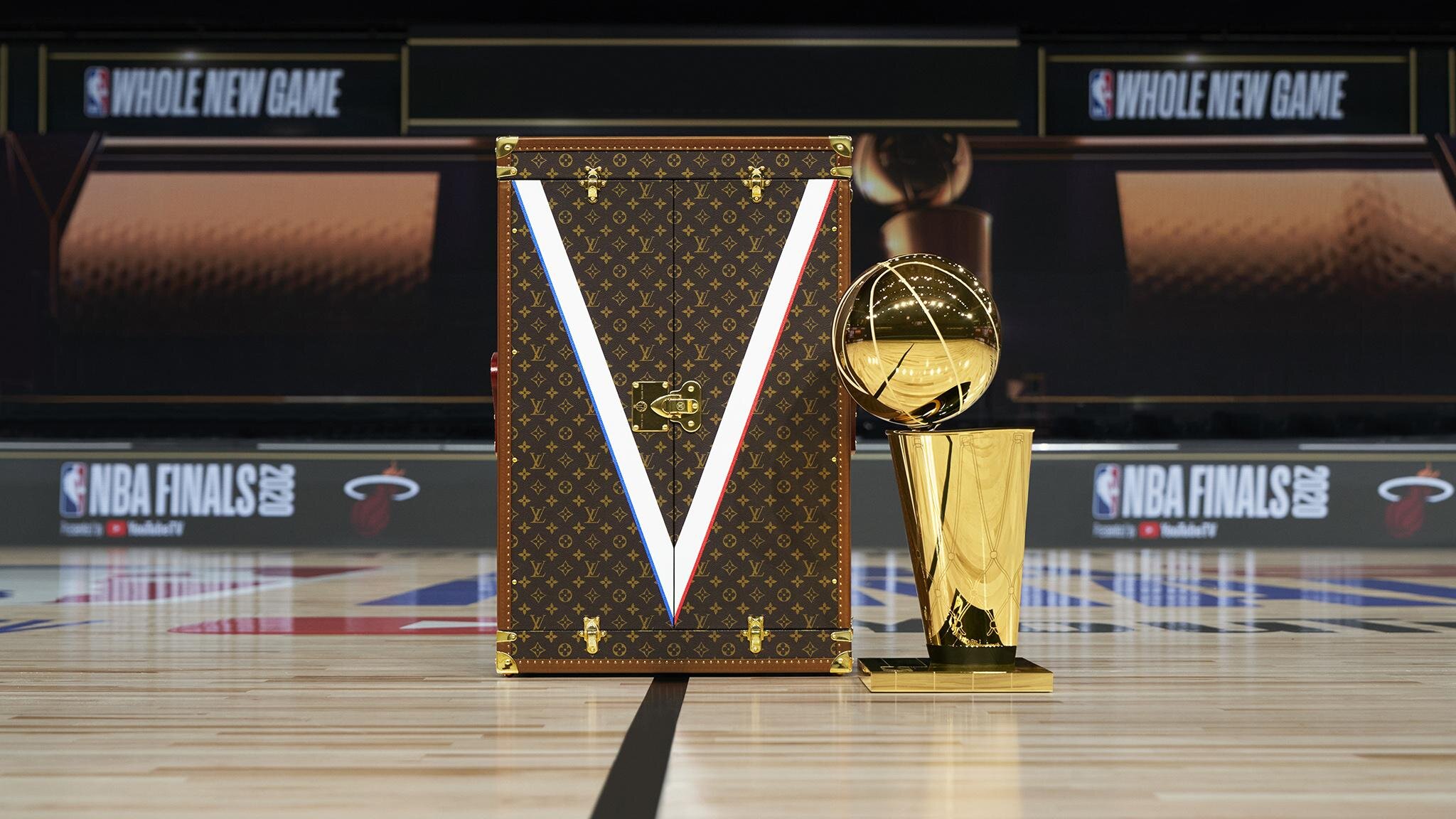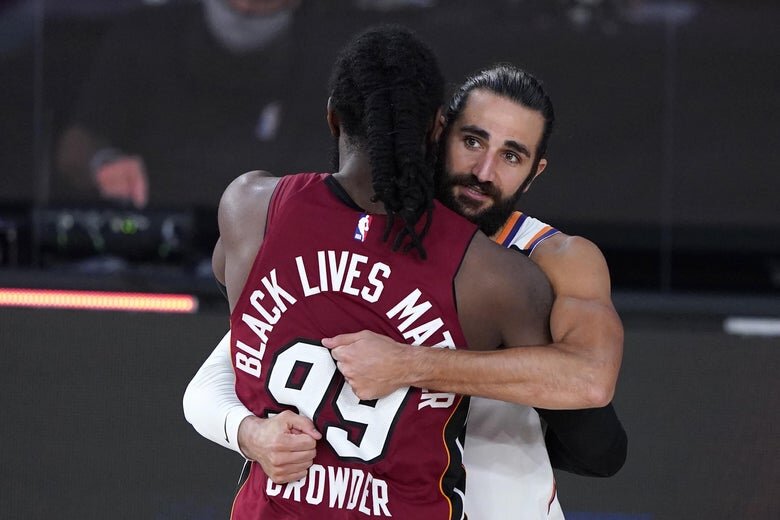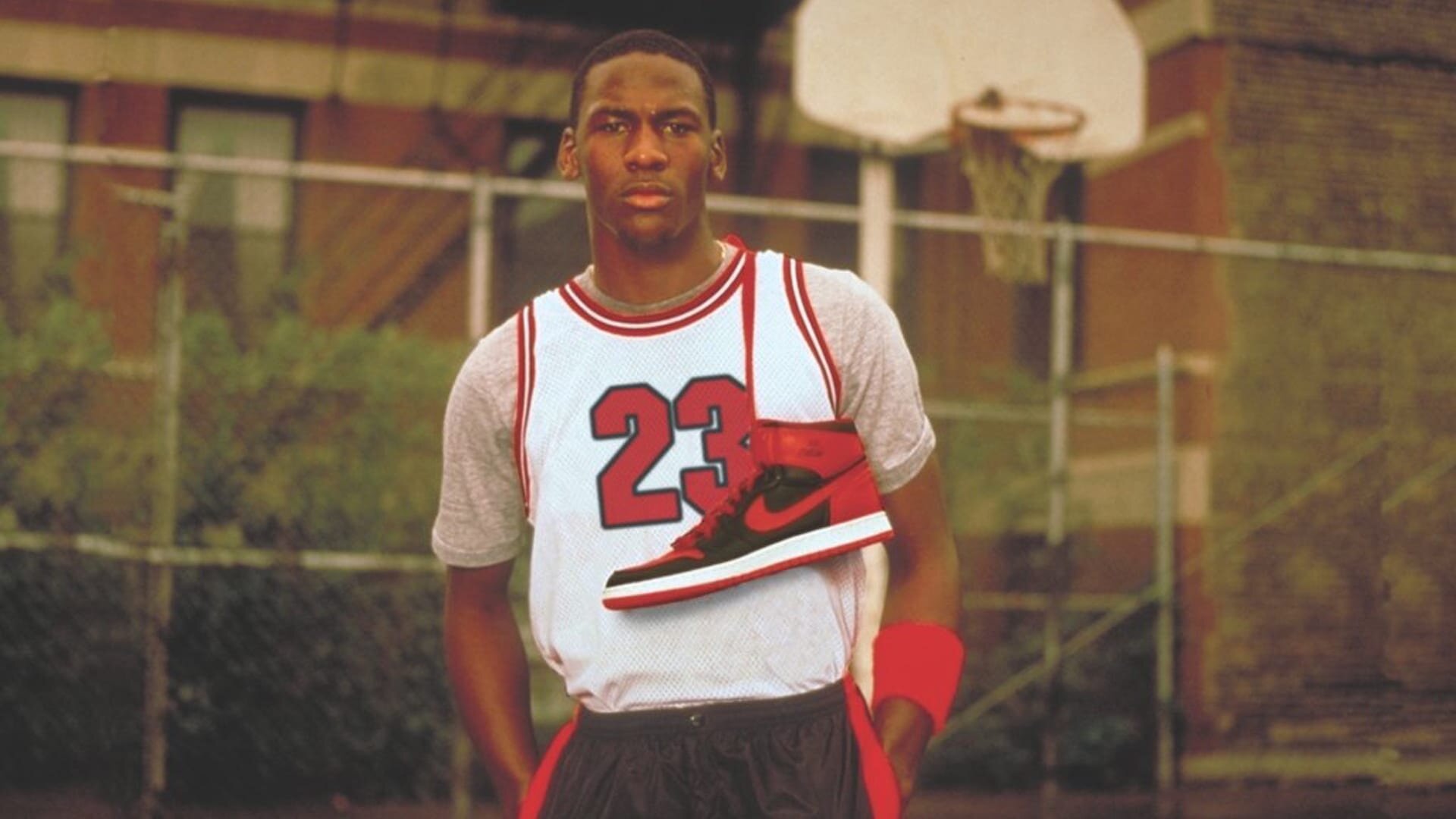From Way Downtown: Modern Fashion, Social Justice, and Basketball
Unlike many celebrities and athletes, Boston Celtics star Jaylen Brown does not just “talk the talk” — he “walks the walk” as well. When Brown first entered the NBA, he was deemed an offensive liability and “too smart” to play professional sports; he has since proved his detractors wrong, having tenaciously worked to become an athletic juggernaut who can drive to the rim, dunk, and shoot 3s at an impressive clip. Most people are content to post on social media vague platitudes about the various injustices that plague society; Brown, the youngest vice president of the National Basketball Players Association in history, has leveraged his influential platform to magnify activist voices, even once driving hours to Atlanta to organize protests against police brutality. Simply put, Brown’s game — on and off the court — speaks for itself.
Image via
When Brown recently sat down with GQ for an interview, he spoke about these topics at length, but his play and his activism were not the only foci of the piece. Looking more like a model than a basketball player, Brown suited up in Virgil Abloh’s new Louis Vuitton x NBA collection, decadently decked out in glamorous accessories and fashion pieces. The GQ article showed off a different side to the cerebral wing, who had traded his normal green jersey for cashmere cardigans and Africa Houndstooth coats emblazoned with the NBA’s iconic logo. Yet, this departure also made perfect sense for Brown, as well as for the trajectory of the NBA and professional sports as a whole. Brown, as he is often wont to do, was making a statement. A different kind of statement than on-court play or social justice activism — a fashion statement. And ultimately, the LV x NBA collection’s marriage of two ostensibly disparate — yet deeply interconnected — elements exemplify, more than ever, the shift in the crossover between sports and culture; a crossover that activist-athletes and Renaissance men like Brown have helped usher in.
The NBA and its players have become much more politicized and activism-oriented in recent years. During the NBA season restart in the Orlando “Bubble,” which coincided with the prolific reemergence of protests against racial injustice and police brutality, players wore jerseys, shirts, and shoes displaying messages such as “Black Lives Matter” and “Say Her Name” (in reference to the murder of Breonna Taylor). Just four years after NFL quarterback Colin Kaepernick controversially began kneeling during the pre-game national anthem, all of the players, coaches, and staff in the NBA Bubble began doing the same before every game, locking arms in a display of unity and solidarity. After Jacob Blake was shot in Kenosha, Wisconsin on August 23, players organized a boycott of the NBA playoffs until the league would succumb to their demands and assume a more active role in organizing for social justice causes.
Image via
If the NBA season restart revealed anything, it was that basketball is not just a sport anymore — it is a cultural phenomenon that intrinsically affects and is affected by every crevice and component of society. And, in a roundabout way, it was fashion that precipitated this development. It was fashion that elevated athletes to the public eye for reasons unrelated to their on-court play. It was fashion that turned basketball players into status symbols, brand ambassadors, and social justice activists armed with the platform to both say and do something.
Like much of modern basketball, the cultural influence of basketball on fashion and society at large can be traced back to Michael Jordan. Jordan’s meteoric rise to superstardom gave him the opportunity to seek out endorsements and sponsorships early in his career. At the time, Converse was the shoe brand of choice for the NBA, as the company’s deals boasted established luminaries such as Larry Bird, Magic Johnson, and Julius Erving. When the young and sensational Jordan signed with Nike — which, at the time, was a relatively unknown track shoe company — heads turned at the fact that the trailblazing rookie was veering off the beaten path. Jordan, determined to carve out his own distinct presence, collaborated with designer Peter Moore on the Air Jordan I; his gamble paid off, as Air Jordans went flying off the shelves, hurdling expectations and notching $126 million in sales within their first year of production. MJ and his Jordans began to transcend the realm of basketball and ultimately crystallized into ubiquitous cultural phenomena — they were featured in song lyrics, Spike Lee films, cartoons, and fast food commercials. As the rapper Nas recounted in the ESPN documentary series The Last Dance, “It was more than a status symbol … You needed that shoe to be like him.” And everybody wanted to “be like Mike.”
Image via
With this increased influence, however, came an increased pressure for Jordan to maintain an active presence and image in the public sphere, particularly as it pertained to politics. These developments came to a head in 1990, during a 1990 Senate race in North Carolina between incumbent Republican and white segregationist Jesse Helms and Black Democrat challenger Harvey Gantt. When people urged Jordan, a prominent Black role model with astronomical influence, to campaign for and vocally support Gantt, however, Jordan refused. Wishing to maintain an apolitical image, Jordan shocked the world with the much-maligned assertion that “Republicans buy sneakers, too.” Gantt would go on to lose the election.
In response to the ensuing controversy, Jordan firmly contended, “I never thought of myself as an activist. I thought of myself as a basketball player.” However, Jordan’s desire to divorce himself completely from political and cultural issues was dissonant with his newfound inimitable influence on society — Jordan’s silhouette was on everybody’s shoes; his face on everybody’s TVs; his name on everybody’s mind. All of America looked to Jordan as a role model, and his word — or lack thereof — carried the utmost magnitude. Jordan’s declaration that “Republicans buy sneakers, too” most clearly exemplified the groundbreaking trajectory that the marriage of sports and fashion had set athletes on. Before Michael Jordan and his Nike deal, sneakers were just for athletics; now, they were status symbols, luxury fashion pieces, and pervasive cultural icons. And, as the mainstream popularity of sneakers and athletic streetwear flourished, so did the expectation that athletes also venture into the unfamiliar realm of culture and politics. Sneakers, and fashion as a whole, had bestowed upon basketball players the capacity to make a significant cultural impact off the court.
Image via
From the Jordan era onwards, basketball players increasingly took advantage of this transformation to curate their image and spearhead cultural shifts. The rebellious and ostentatious Allen Iverson, with his tattoos, gold chains, and baggy clothes, helped popularize the “bad boy” aesthetic both in and out of the league; so many players began adopting similarly “scandalous” styles that NBA commissioner David Stern enacted a “business casual” dress code for all league events, including games. However, the power of the players continued to grow: more and more players followed in Jordan’s footsteps, signing deals with shoe companies, fashion houses, and other major brands. Even headphones were sucked into the mix — LeBron James was photographed at the 2008 Olympics wearing the at-the-time unknown Beats headphones, and within a day, the company exploded in popularity. Ultimately, the league began to relent and discard its more draconian dress policies — in 2018, for the first time in league history, the NBA lifted the ban on players wearing sneakers without team-specific colors. Athletes were allowed to wear any sneaker of any color and style during games, and the players jumped at the opportunity to show off their kicks, especially those that were custom-made, yet to be released, or part of their own brand.
As such, today, basketball players have come to be strongly associated with the high life, both in the context of fashion and outside. Abloh, in reference to his LV x NBA collection, quipped that “ideas of luxury can be found in the sports world and its champions as much as in traditional forms of artistry,” and one need not look further than the “concrete runway” that athletes walk through on their way to the game for confirmation. In the last decade, NBA players have begun strutting through arena tunnels or FBOs adorned with Armani and Givenchy, seizing the chance to grow their brand as influencers — Houston Rockets point guard Russell Westbrook even published a 2017 book, Style Drivers, showcasing his clothing and style as well as his collaborations with fashion brands like Acne Studios. Fashion has paved an avenue for athletes to cultivate their identities and brands off the court, and with that increased visibility in non-basketball settings has come more cultural and social leverage.
Image via
While Jordan and Nike had made concerted efforts to remain apolitical back then, basketball stars now, armed with the benefit of hindsight and their newfound off-court confidence and influence, have opted to grit their teeth and plunge headfirst into the fight for social justice. Aside from Jaylen Brown, a myriad of NBA stars attended protests this past spring, including Marcus Smart, Karl-Anthony Towns, Malcolm Brogdon, Lonzo Ball, Tobias Harris, and many others; if they were not photographed at a rally, then they posted calls to action on their social media, urging people to donate, vote, and protest. Even the formally neutral Jordan — the putative catalyst for the propagation of athletes’ political power — broke his silence, pushing Nike and the Jordan Brand to release a statement proclaiming that “Black Lives Matter.” The man who unwittingly set basketball on a course towards cultural and political import was finally taking a resolute stand as an activist.
Abloh asseverated that the LV x NBA collection “celebrates the cultural contribution of basketball and its diverse characters.” The nature, purpose, and timing of the collaboration were felicitous: a high-profile recognition of the ascension of athletes’ platforms and voices — a trend set in motion by basketball-inspired fashion — coinciding with players’ fastidious work on addressing salient sociocultural issues on a nationally-visible scale. Strutting down the “concrete runway” in designer clothes and modeling for luxury brands has allowed for players’ cultural influence to propagate, and activist-athletes like Jaylen Brown have subsequently since become the norm, rather than the exception. Perhaps it was indeed fitting for GQ to have Brown model the LV x NBA collection for the article, as few have come to epitomize the intersection of basketball, fashion, and social justice as much as Brown has.
During the NBA restart, social justice activism was not the only breakout presence — the Bubble also unleashed new star players, including Denver Nuggets point guard Jamal Murray, who was shooting from 3 like Steph Curry and making acrobatic layups that commentators described as “Jordan-esque.” Murray, however, also attracted attention for other reasons — he walked onto the court for Game 6 of their first-round playoff series against the Utah Jazz wearing custom Adidas shoes furnished with the images of George Floyd and Breonna Taylor to honor the fight between police brutality and racial injustice. Murray, who would erupt for 50 points en route to a decisive victory, emotionally professed after the game that he drew his strength from his shoes and what they symbolized. No quote from the Bubble encapsulated the cultural impact of basketball — and its consanguinity with modern fashion and social justice — than Murray’s closing words:
“In life, you find things that hold value to you and things to fight for. And we found something we’re fighting for as the NBA, as a collective unit. I use these shoes as a symbol to me to keep fighting all around the world.”
Image via
Featured image via












